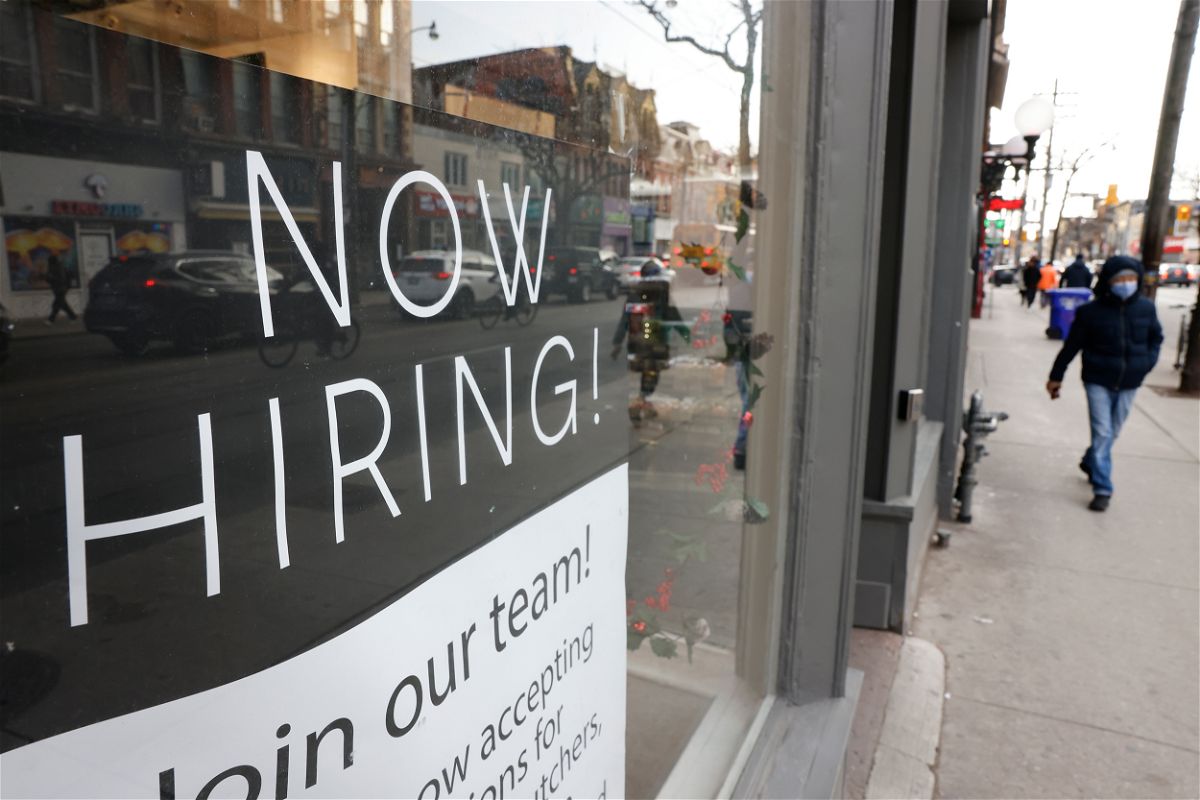Job openings jumped unexpectedly to 11 million in December

The number of job openings unexpectedly jumped in December
By Alicia Wallace, CNN
Despite the looming threat of recession and the cacophony of mass layoff announcements, US businesses still need workers — 11.01 million of them.
The number of available jobs unexpectedly rose in December, climbing from a revised 10.44 million openings in November and exceeding economists’ expectations of 10.25 million, according to Bureau of Labor Statistics data released Wednesday. The 11 million openings for December is the highest since July.
The largest increases in job openings were in accommodation and food services, which were up 409,000; retail trade, up 134,000; and construction, up 82,000, according to the BLS report.
The latest Job Openings and Labor Turnover Survey, or JOLTS, showed the labor market that entered 2022 red-hot had finished up the year still balmy: There were 1.9 available jobs for every person looking for one.
“The labor market continues to defy the recession predictions of experts,” said Christopher Rupkey, chief economist with FwdBonds, in a statement. “This could well be the first recession in history without material job losses, even with production and consumer spending turning economic growth upside down.”
The December JOLTS report showed that job hiring rose to 6.17 million from 6.03 million in November, according to the report. Layoffs increased to 1.47 million from 1.41 million in November, and the number of people quitting their jobs ticked down to 4.09 million from 4.1 million.
The Federal Reserve has been looking for a tighter labor market to help support rate-hiking efforts to tame inflation. While Fed officials have noted that wages don’t appear to be driving inflation, they have expressed concern that a tight labor market and the imbalance of worker supply and demand could cause pay to rise and, in turn, higher prices.
Within the labor market, there’s a bifurcation that’s occurring in terms of people’s experiences, said John Leer, chief economist for global decision intelligence company Morning Consult.
“For folks who are working and have jobs, they know that they’re in demand, and they’re trying to do everything they can to get a slightly higher-paying job,” including quitting, he said. “But for folks who are out of the labor market and are not working or not looking for work, they’re really disillusioned, despite wage growth is as high as it is. They’re not being enticed to come back in and start working.”
Strong 2022 but shifts likely ahead
The latest batch of turnover data caps what was a historic year in the labor market, said Julia Pollak, chief economist at ZipRecruiter.
The records notched during 2022 include the most completed hires (76.4 million), most quits (50 million), lowest layoffs and discharges (16.8 million) and most employee-driven turnover (70%, up from pre-pandemic 53%), according to Pollak.
Still, there may be something more than meets the eye in December’s openings number, she added.
The increase is “somewhat puzzling” and stands in contrast to Federal Reserve data on business hiring plans and other leading indicators, she noted.
“It is our belief that the current number of job openings, as measured by the Bureau of Labor Statistics, vastly overstates the current strength and tightness of the labor market,” Pollak said in a statement. “Hires and online job postings have undergone a slow renormalization in recent months that is not yet reflected in job openings.”
Just how much and how quickly the job market cools could very well depend on consumer activity, said Leer.
In recent months, consumers have pulled back on their spending and were reporting increased stress in their finances, including spending more money than they were bringing in, Leer told CNN Business.
“We’re starting to see businesses, as well, feel the pressure of elevated interest rates, tighter financing conditions and potentially weaker consumer demands, leading them to reduce some of their hiring plans,” he said. “So when you put those things together, my view is increasingly it’s likely that demand for labor will slow pretty dramatically over the first quarter.”
“In the second quarter, I think that’s when we’re more likely than not to see a downright pullback and a contraction in jobs growth,” he added.
There are some indications that a slowdown has already started. As of January 27, job postings on Indeed were down 4% from where they were a month prior, said Nick Bunker, economic research director for North America at Indeed Hiring Lab.
“Obviously, wait for more data on that front, but it does look like there is a moderation of demand at least so far [in 2023],” he said in an interview with CNN.
A significant portion of that data will come out Friday when the BLS releases its jobs report for January.
The-CNN-Wire
™ & © 2023 Cable News Network, Inc., a Warner Bros. Discovery Company. All rights reserved.

